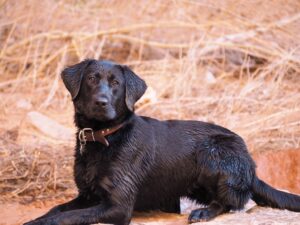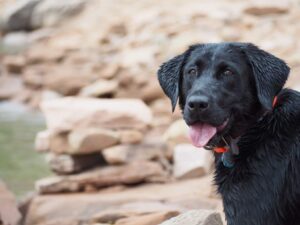Release cues are an often-missed important component of teaching any behavior for a long duration. In competitive sports, how you train your release cue can save (or create) a ton of work. This article focuses on release cues as they are relevant to training companion dogs in non-competitive environments.
A release cue tells your dog they no longer need to do what they were previously asked to do. An example of a release cue is when you ask your dog to sit and wait patiently while you put his bowl down, then you say “Okay!” or “Free!” to mean he is allowed to eat his dinner.
Release cues are important for duration based behavior (stay, place, heel, etc) because they give our dogs clarity about when the behavior is over. Without consistent use of a release cue, your dog is likely to start deciding for himself when he’s done doing the thing – which might be at the exact moment you need him to stay put!
Word Choice Matters
For so many things in training, it doesn’t matter which words you pick. Dogs don’t speak English (or Spanish, or French, or German…), so you can use whichever words, sounds, hand signs, or tones you want to signal your dog. When it comes to release cues, it is sometimes an issue if you choose the word “Okay!” as your release cue. That’s because most people say “Okay!” fairly regularly in conversation, and its often said alone as a confirmation – without other words on either side to disguise it. This means that dogs hear and recognize this word fairly often as we go about our day, which makes it a fair chance that you might say “Okay!” when you need your dog to stay in position.
Instead, many trainers and owners are now opting for “Free!” or “Release!” as their release cue.
How to Teach
- Say “Free!” then toss a cookie for your dog to chase. Repeat 5x, or until your dog knows the cue.
- Put your dog in a stay. After rewarding a few times, say “Free!” then toss a cookie for your dog to chase. Repeat 5x.
- Repeat the above, saying “Free!” then gesturing for your dog to come with you.
Once your dog gets the gist of it, you can start using it in other contexts. You can also incorporate release cues with functional and environmental reinforcers!



